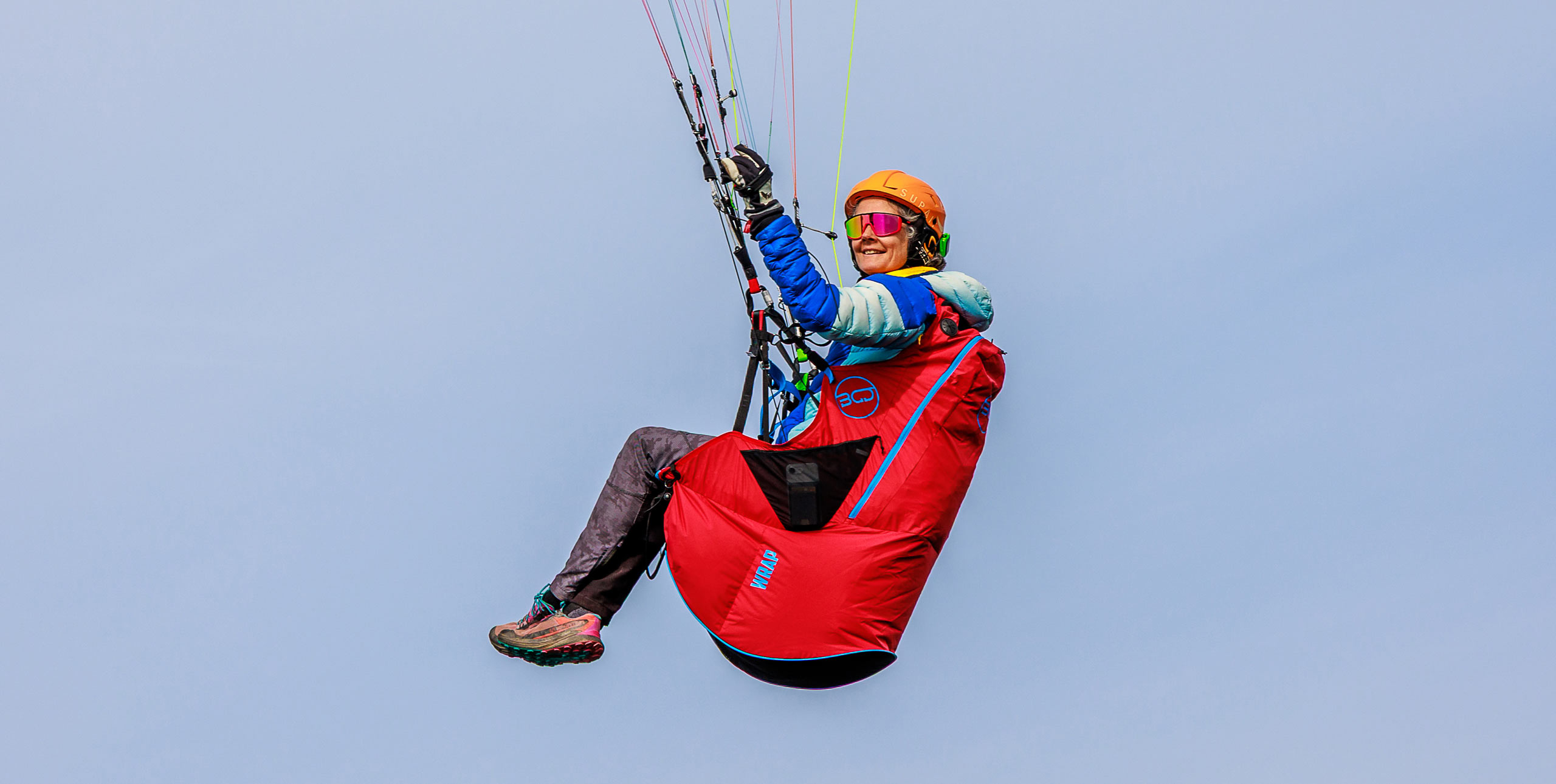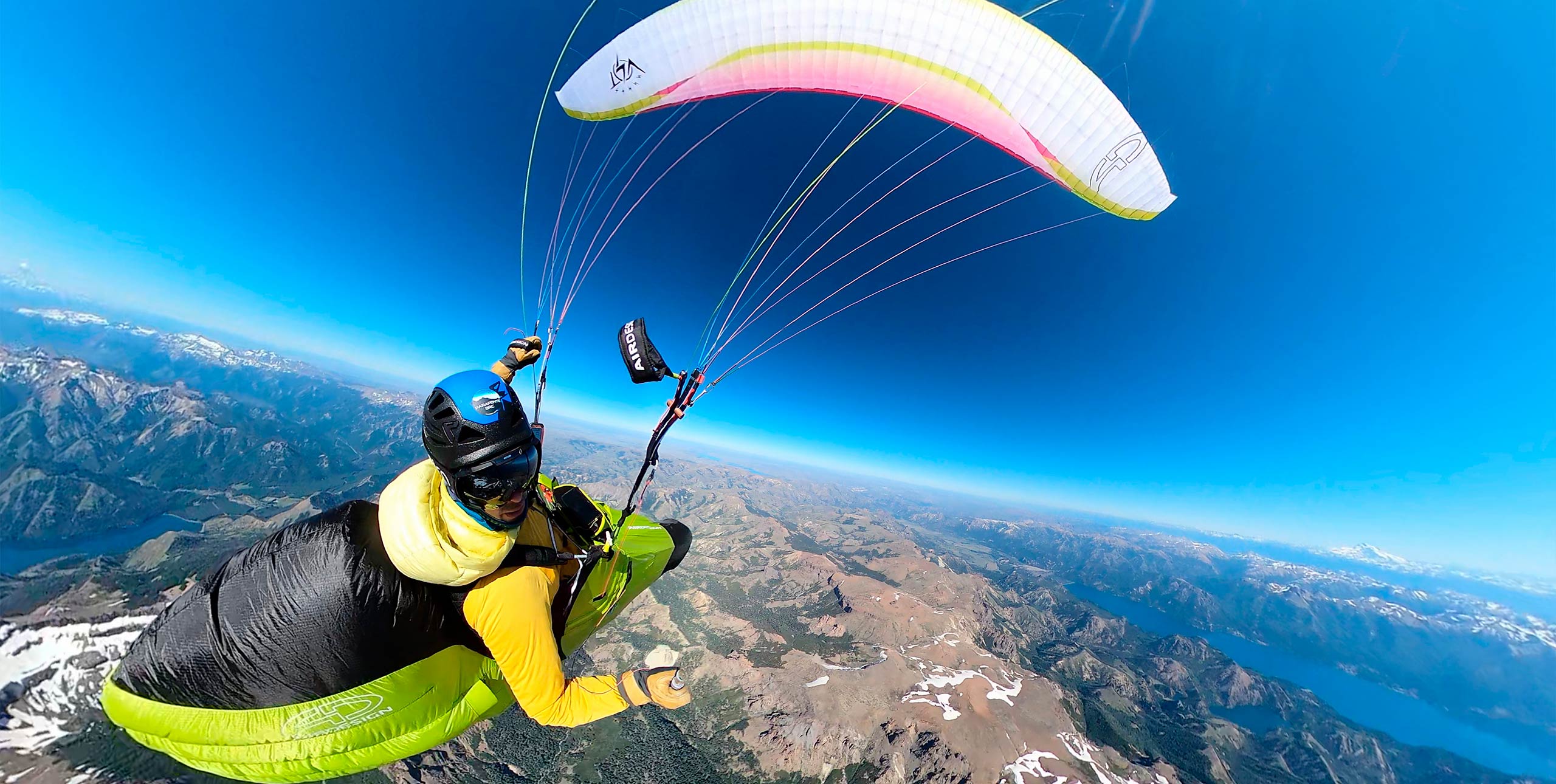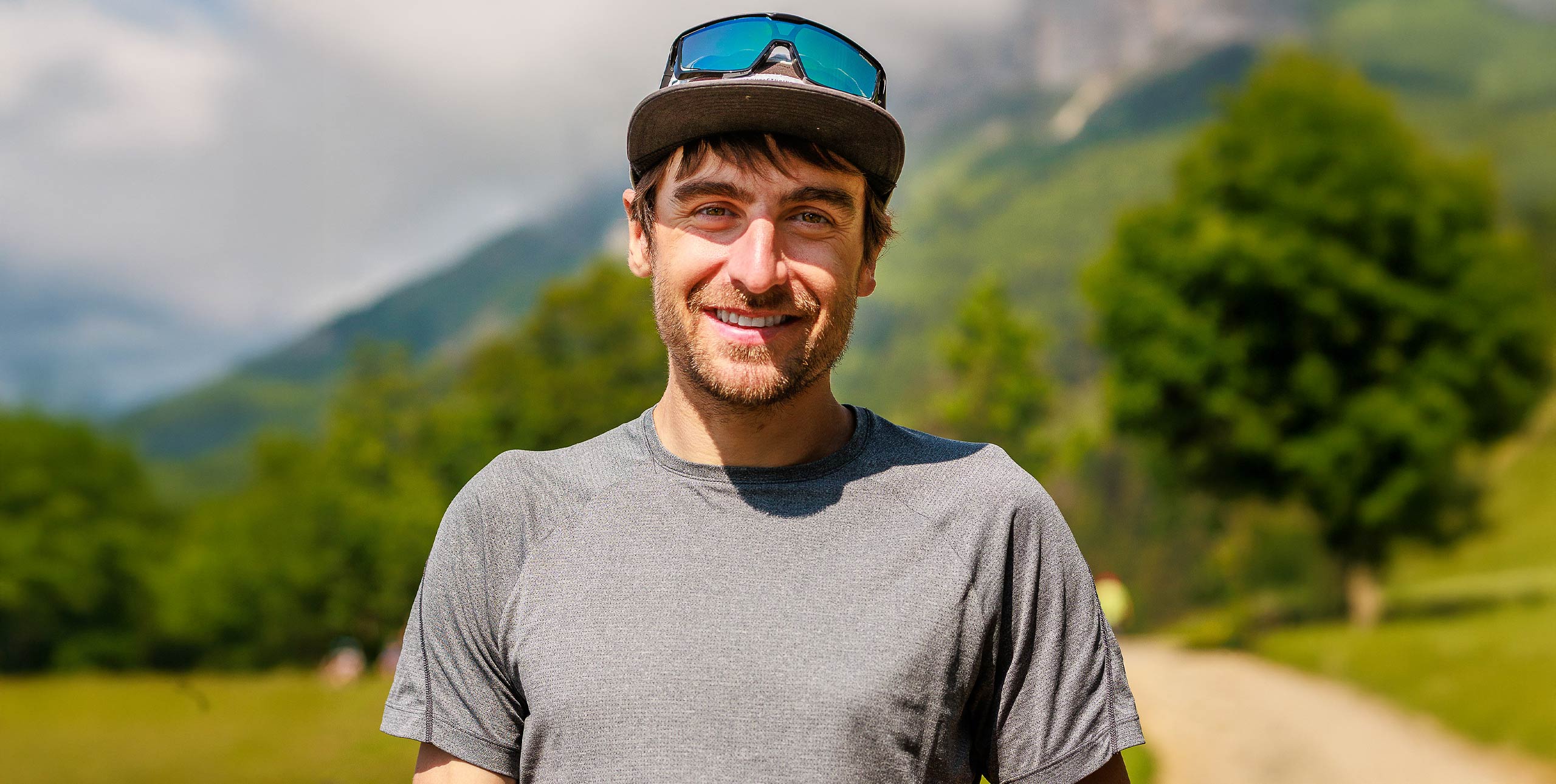When renegade designer Gin Soek Song quit the Edel camp in 1998 after six years sterling service, he left behind a legacy of fine wings; the Space, Racer, Rainbow, Energy, Sabre & Sector are all his work. With a reputation not only as a brilliant designer but, also a long standing member of the Korean paragliding team and as a world class pilot too, it was only natural that his new company Gin Gliders would turn a few heads.
However, few would have predicted the worldwide groundswell of support that has grown for Gin and his new company and he now, within less than a year of forming, finds himself spearheading a strong design team and a formidable competition team that took the 1999 PWC Open constructor’s cup. This month we put Gin’s DHV 2/3 wing, released in November 1998, through its paces to see if it as good as its pedigree says it should be.
Design
The Bonanza is a performance wing and is pitched for the experienced intermediate pilot looking for a safe all rounder. The DHV ratings speak of a safe DHV 2 glider with just the accelerated deflation test bringing in a 2/3 rating, but with a top speed to match many of its higher rated contemporaries. Perhaps, on paper at least, the perfect serial wing? ’Not so’ says Gin himself.
| As for the magnetic metal brake keepers: the last time I saw these was on my mums handbag, and I was surprised to see them turning up on paragliders. |
Gin is widely published as being a critic of the serial class. He devotes huge energy to competition flying and consequently took the coveted Constructors’ Trophy both at the World Championships and the PWC this year, his first in business.
I had the chance during the rained-out World’s in Austria to quiz Gin on his feelings about the Serial issue and the Bonanza’s place in the ranks.
What are your views on serial class gliders?
Gin: The problem is that at the moment the serial category brings confusion to the public. It takes the public’s safe performance wings and turns them into competition gliders. This means that the public don’t want to fly DHV 2/3 anymore as it is perceived as the racing category.
Did you think about the serial class when you were building the Bonanza? Gin: The Bonanza isn’t aimed at the ’serial’ racer. It is designed to be a fun recreational wing for the experienced intermediate pilot. If we wanted to we could build a wing that would pass DHV 2/3 and win the serial class but that wing wouldn’t be a fun recreational glider for the general public. Instead it would be a slightly de-tuned competition wing and not for the same market as the Bonanza.
So you are not entirely against the concept of serial class?
Gin: Not at all, but at the moment the category is wrong. If we are going to restrict competition wings then using the grade of glider the public see as their intermediates is not right. We should look towards a better, higher level of certification. Then it might gain more pilot backing and perhaps work.
Construction
Gin has built a wing with lots of character. The colour scheme is simple and clean, although disappointingly similar to Edel’s, but it is the actual cut of the wing that turns heads. There is a certain uniqueness in the way Gin has cut the tips slightly diagonally back and, although not as striking as the Freex wingtips, they leave an easily identifiable glider whose general appearance sticks in one’s mind. The sail surfaces are clean, lending the impression of a properly finished wing that was ready for release.
As is so common nowadays, with designers striving for less line, less drag and more performance the Bonanza has required internal reinforcing strips. I don’t think it looks that attractive having extra strips of fabric running along the span in sections but it’s nothing to be ashamed of as most manufacturers are doing it nowadays. Perhaps this is even a glimpse of the future when gliders will have three lines each side and a complex series of straps, tubes and inflatable box sections to keep the sail form and stop them falling apart the minute they deflate?
| Perhaps, on paper at least, the perfect serial wing? ‘Not so’ says Gin himself. |
The Bonanza is made from Carrington Performance Fabrics 1080N fabric, the same as used by Nova. It is a durable high quality cloth and one of the highest performing available from the British company. Undoubtedly it is not quite as hard wearing as Apco’s and Ozone’s choice with South Africa’s Gelvanor cloth, but the lack of elasticity in the cloth should theoretically keep the sail shape better over a long period of time. Carrington 1080N gives the glider a tough but slinky feeling rather than the crispness you often associate with new wings. There is some external stitching where the cell walls meet the top and bottom surfaces but the stitching itself and general quality of build are excellent. The lines are made of Technora Aramide which is a kevlar based product and rise in two cascades to the sail. The mains are 1.9 mm in diameter and the uppers 1.2 mm.
The risers give you your first feeling of a really well thought out product. Made from a soft, sleek looking thin black polyester with coloured plastic inserts, beautiful crafted golden pulleys, and the new craze, magnetic metal brake keepers. The first time I saw these was on my mum’s handbag and I was surprised to see them turning up on paragliders. However, as long as they don’t lose their magnetic charge, I think there are neat; time will tell if they are here to stay.
The speed system is set between the A & B risers and is set to pull the A down slightly more than the B whilst the C riser is left floating between B & D. The result is a smooth, light and easy to use system that gives you a very manageable 12 cm of travel.
Gin has used the now traditional diagonal cross braced cells to reinforce the wing and cut down on lines – the Bonanza has line tabs every three cells with diagonals leading in towards the central un-braced cell.
The Bonanza comes in 3 sizes; small (70–85 kg), medium (85–100kg) and large (95 –120kg) should cover most pilots but for big lads, there is now an extra large although it’s not yet certified.
The bag
The Bonanza I flew came with the new supa-dupa Gin bag specially designed to keep customers that have seen a real rucksack before happy. It is a great step forward in a sport where enough of us have damaged backs already without hanging over-weight, misshapen sacks off our shoulders and then dragging them up steep hills. Gin’s new sac gives us real padded shoulders straps and a waist belt you would even use, one central zip, internal strapping and a big easy fitting hood.
‘At last’ you’d hope to hear me cry, but no. Although Gin’s sac offers a lot more comfort than many others, it’s still not sorted. The straps could do with more padding and the shape of the bag still isn’t sorted — it still sits too far out from your back, giving you that constantly-leaning-forward stance, which isn’t the best for good back maintenance. The back system didn’t seem to work as well as it looked like it should. I carried it around for a few days before deciding that Gin had added all the right bits to the bags without integrating them properly. Conclusion: better than most but still not perfect.
Handling
The Bonanza is an ’easy to launch, easy to fly’ kind of wing. Launching both front and reverse is straight forward with no hidden quirks. Once off the ground I found it light on the brakes and a pleasure to fly. It is lighter and less demanding than say a Response and closer to the Sigma 4 in brake pressures. Gin has gone for the modern style of lighter, more progressive braking which definitely gives the pilot a less tiring time on a long day out, but I personally still find it lacks a bit of the tug and kick that I’m used to to tell me what’s going on upstairs. It’s on the docile side of performance flying.
I used to think that the heavy handed pilot is less likely to spin or stall a wing with a high build up of brake pressure and a sharp and very noticeable drop off when the airflow breaks away. But, having recently flown a lot of today’s gliders, I am starting to like the long slow approach which lets the brake pressure build up slowly and allows the heavy handed to actually hold the glider at stall point a little longer before biting them.
This ‘easy to fly’ feeling combined with lovely roll characteristics meant I felt quite at home immediately, so I flew it for a week whilst teaching cross country flying skills in the Alps; it proved to be good choice. Teaching pilots in the sometimes choppy spring air I was able to keep my eyes on them without the constant distraction of rustling nylon.
In weak thermals it was smooth and co-ordinated and I could carve even, regular turns with very little arm wrestling required, whilst in strong lift the gentle brake pressures let me work away happily without aching shoulders. The wing reacted really well to weight-shift too and you can whip it round and into spirals within a turn or two.
Gin must have been working hard as the Bonanza has shed those unwelcome floppy tips that were a trademark of Gin’s performance designs between 1996 and 1998. The Bonanza lets you punt round in thermals with the outside brake off without any signs of a tip deflation. The glider feels well pressured throughout and deflations when they came were a bit of a non-event.
The Bonanza is a lovely play wing. I had a great time close in swooping the ground and trying to land on top of little rocks. It feels like a precise intermediate yet the performance, once you start going places, is better than that. After an hour of playing seagulls my only complaints are the wing doesn’t seem to have quite as much pressure in the sail as I am used to with Edel’s wings (although that is quite possible simply down to the lighter brake pressures) and the Bonanza is a little more active in yaw than some of its contemporaries.
Performance
Out on the track the Bonanza, given it’s DHV ratings, is quite an eye opener. With a trim speed of 36 km/h I was overjoyed to pull an extra 14 km/h and hit the 50 km/h mark for a second or two. I could see why there have been not complaints from the ’Serial’ racers out there despite the Bonanza’s almost benign ratings.
The other great thing is the speed system feels properly effective, like you might actually consider using it to the max in bouncy air. Several gliders I’ve flown this year have had huge speed systems that you just wouldn’t use without a gun to your head — the Bonanza gave me the impression that I’d be happy to motor along with the pulleys touching.
The glide is fine, as good as any other wings of this class comparable to many of the comp wings of two years ago, and the handling so nice you can’t fail to climb well too. In the British Paragliding Championships, which are ’serial’ class only, I never once heard the Gin pilots complaining about their wings — instead the Bonanza was seen as a fun, safe and competitive wing to fly.
Security
The Bonanza is just about as safe as you can buy a DHV 2/3 wing. Only one 2/3 rating in accelerated deflations of which the test pilot noted that the recovery is spontaneous and quick. He also notes that the wing has no tendency to stall during counter-steer. This glider, like the Sigma 4, has the behaviour of a DHV 2 wing until you touch the bar.
A week in choppy air with my attention focused on my clients, not my wing, and yet no deflations! The occasional rustle and tip flap but nothing to even raise
an eyebrow at – I was impressed.
Big ears are quite hard to pull in, with a good deal of pressure in the tips. ut the ’one-line-in-and-keep-pulling-for-more’ style works a treat. Re-inflation is quick and automatic most of the time with only a little pump to clear really big big ears. B lining was simple and docile with little surge on release and all in all I wouldn’t be too gripped about being sucked momentarily into cloud under a Bonanza.
Summary
The Bonanza is an impressive all rounder. Safe as houses for it’s DHV 2/3 rating, I felt I could have taken it in to either the racing or adventure flying environment with total confidence. A bit soft on the controls for some perhaps, but well worth the effort of adapting your style to. Gin- make mine a double!
Bob Drury
• Got news? Send it to us at news@xccontent.local
Subscribe to the world’s favourite hang gliding and paragliding magazine











